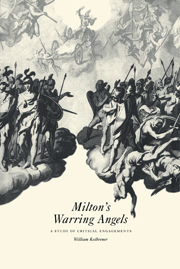Book contents
- Frontmatter
- Contents
- Acknowledgments
- Introduction
- PART I POLITICS
- PART II THEOLOGY
- 3 Introduction: Whig metaphysics
- 4 “Abnormal forms of discourse”: Milton's De Doctrina Christiana
- 5 “Milton contrasted with Milton”: multiplicity in De Doctrina Christiana
- PART III POETICS
- Conclusion: devils, angels, and Milton
- Notes
- Index
3 - Introduction: Whig metaphysics
Published online by Cambridge University Press: 23 November 2009
- Frontmatter
- Contents
- Acknowledgments
- Introduction
- PART I POLITICS
- PART II THEOLOGY
- 3 Introduction: Whig metaphysics
- 4 “Abnormal forms of discourse”: Milton's De Doctrina Christiana
- 5 “Milton contrasted with Milton”: multiplicity in De Doctrina Christiana
- PART III POETICS
- Conclusion: devils, angels, and Milton
- Notes
- Index
Summary
It came to me as I lay there, a nightmare that this was the last hour of history. Nothing else explains it. The breakdown. I mean, how thorough it is, from top to bottom, like everything from ancient times to now, the civilized values and visions of high culture, have all gone to hell in fine old hamlets filled high with garbage, overrun with Mudmen and Jews, riddled with vital infections and venereal complaints that boggle the mind and cripple whole generations of white children who'll be strangers, if not slaves, in their own country. I saw families killing each other. People were living in alleyways. Sexes and races were blurred. I saw riots in cities and on clippers. Then: the rise of Aztec religion and voodoo as credible spiritual practices for some, but people were still worshipping stage personalities too. On and on it came to me. Crazy as it seems, I saw a ship with a whole crew of women. Yellow men were buying up half of America. Hegel was spewing from the mouths of Hottentots. Gawd!
Charles Johnson, Middle PassageThere are Whig histories of all varieties; “nostalgia,” as Raymond Williams has suggested, “is universal and persistent.” Not only T. S. Eliot whose “dissociation of sensibility,” has been habitually viewed as serving a “cultural elitism,” but Marxists and neo-Marxists, as well, have produced their own Whig histories, drifting into what Pocock calls the “figures of metahistory.” Fredric Jameson, though repudiating the affiliation of Marxian paradigms with the gentlemanly and now “extinct” “liberal or bourgeois narratives of progress,” nonetheless insists upon a common element to both historiographical strands.
- Type
- Chapter
- Information
- Milton's Warring AngelsA Study of Critical Engagements, pp. 53 - 62Publisher: Cambridge University PressPrint publication year: 1997

